"Missing"
The Crypt Gallery
St Pancras Church
London
24th - 27th May 2018
“and God said unto them, Be fruitful, and multiply, and replenish the earth, and subdue it: and have dominion over the fish of the sea, and over the fowl of the air, and over every living thing that moveth upon the earth” Genesis 1:28 – and thus begineth the issue which vexeth the street artist Louis Masai.
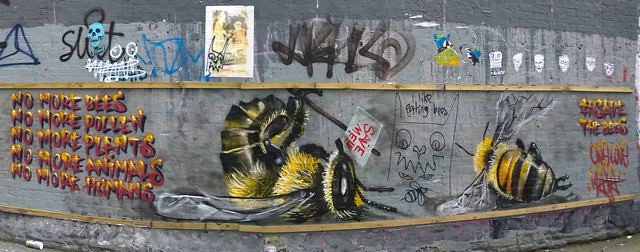
#Save The bees, Masai, Shoreditch, 2014
Louis Masai's environmental campaigns have been waged on walls in London and far afield since about 2010. With stark clarity and beautiful art, Masai raises awareness of the impact mankind has had on all manner of threatened species.
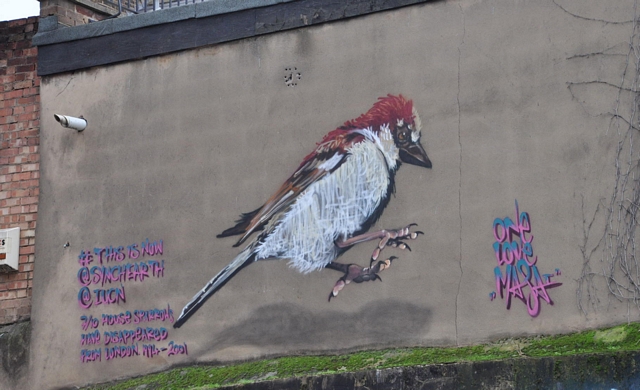 #This Is Now, 2014, 7 out of 10 sparrows disappeared from London 1994 - 2001
#This Is Now, 2014, 7 out of 10 sparrows disappeared from London 1994 - 2001
Masai has now brought his poignant and thought provoking work indoors for a solo exhibition “Missing”.
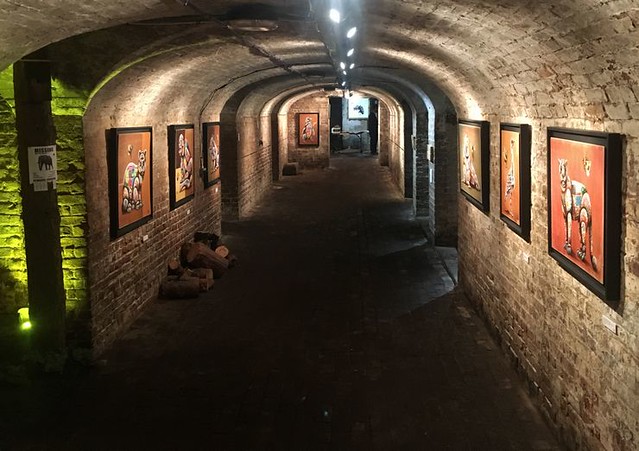
Exhibitions by street artists need to strike a balance between the excitement and everyman appeal of the art on the streets and the commercial and intellectual imperatives of an art world machine that operates on money. For novelty, Masai has found a great location for an exhibition, the crypt under St Pancras Church. Brick lined tunnels, dust and cobwebs, graveyard detritus and curious vaulted spaces provide an intriguing backdrop quite different to the typical contemporary white cube art space, this is certainly not your typical retail art box.
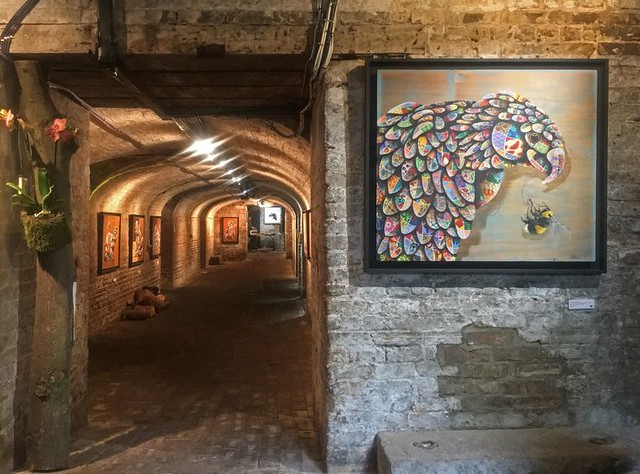
In various subterranean cross passages, “Missing” posters for endangered species have been pinned to tree trunks in mimicry of neighbourhood “anyone seen my goldfish?” poster appeals, hence the “Missing” of the show title.
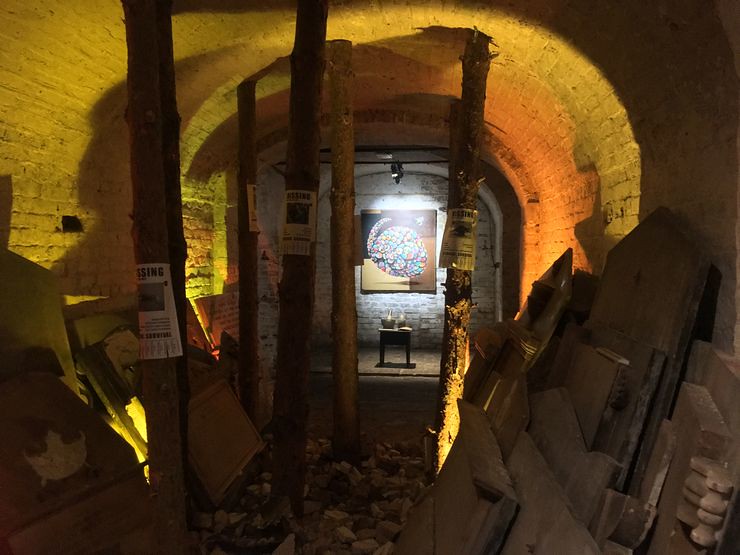
Missing
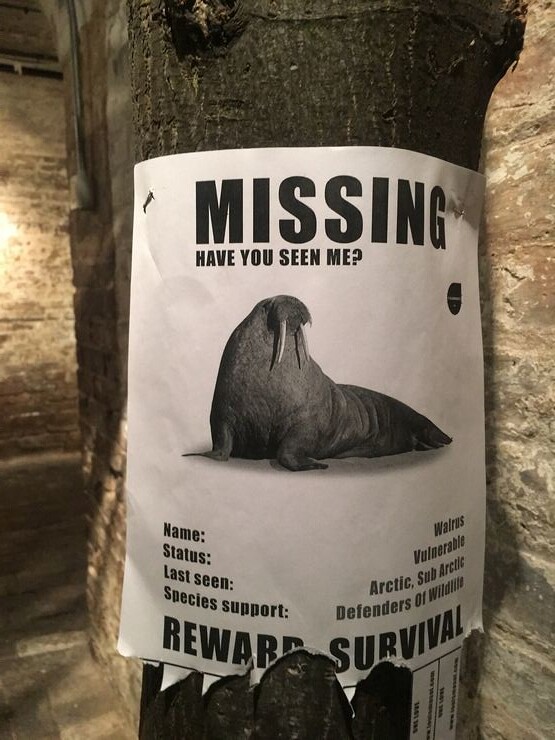
Missing: Walrus
The first and probably most impressive sequence of work to greet the visitor are a series of acrylic and bitumen paintings on reclaimed wood in which endangered animals are rendered in a colourful patchwork which is being repaired by a bee bearing a needle and thread. The bee as an agent of repair is a motif that recurs in many guises in this exhibition.
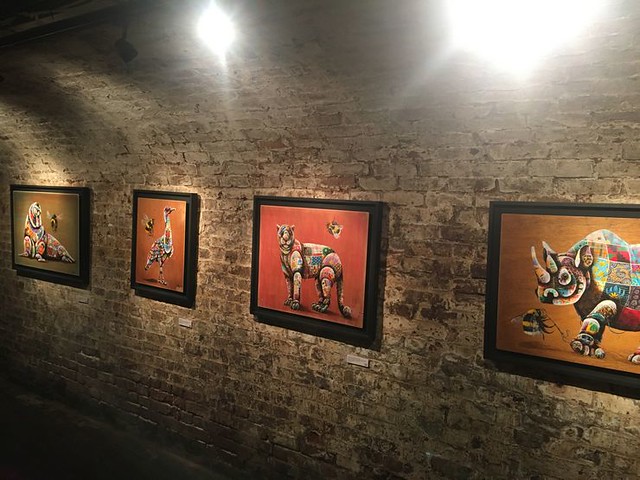
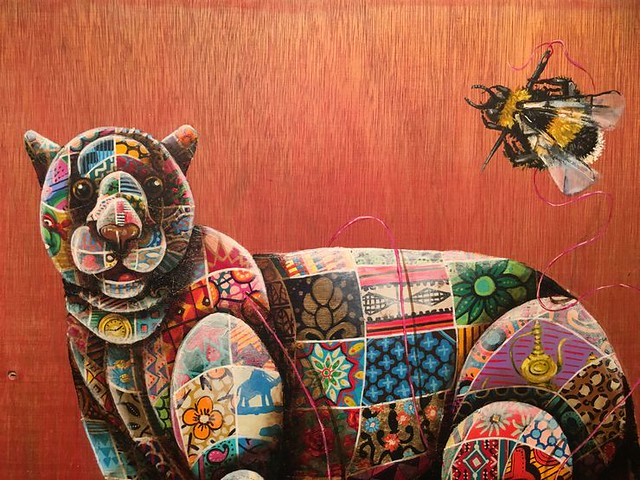
"Last Two Hundred And Fifty"; Species Arabian Leopard
A clue to understanding Masai’s perspective comes perhaps from a moment in a film produced by Masai on his travels in which a commentator laments the failure of the orthodox red flag waving approach to environmental awareness: “everything is going to die; we are all doomed; stop stop STOP!!” The solution is to replace this with messages of positivity, to motivate people into action in the belief that their actions can have an effect. It IS possible to have a positive effect through change, it is not too late, the harm can be repaired if we heed the necessary lessons. Hence the bees, whose plight – death due to pesticides - has now for years been used as the benchmark for the forthcoming environmental apocalypse are now seen as potentially the agents of repair and restoration.
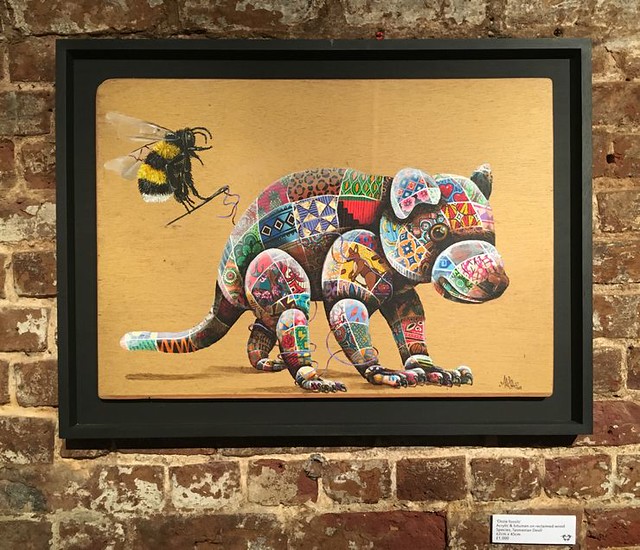
"Ossie Fossils"; Species: Tasmanian Devil
Masai's use of colourful patchwork paintings of endangered species springs from the idea that once the creatures are gone all that will be left will be the toys.
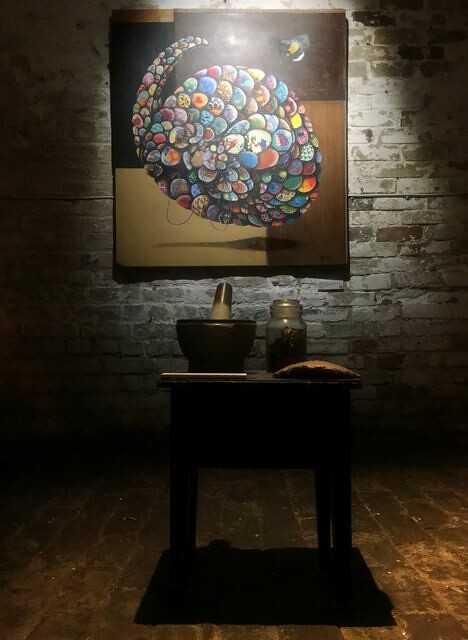
Pangolin

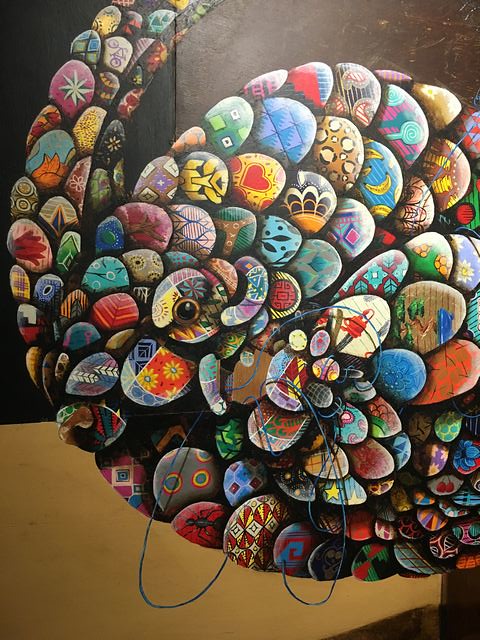
Pangolin (detail)
In a series of small catacomb spaces Masai has combined sculpture, wood and dead matter to create quite stunning tableau of environmental harm and endangered species crisis. One of Louis’ oft repeated messages from his Save The Bees campaign, “when we DIE we are taking You with us” looms over an absolute charnel house of real dead bees, about 24,000 apparently. By day 2 these were emitting a quite detectable odour. Oh the hum-anity.
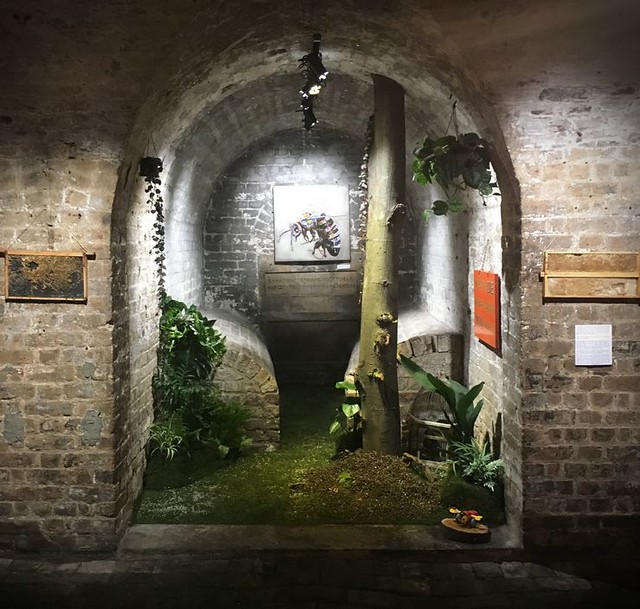
When We DIE We Are Taking YOU With Us
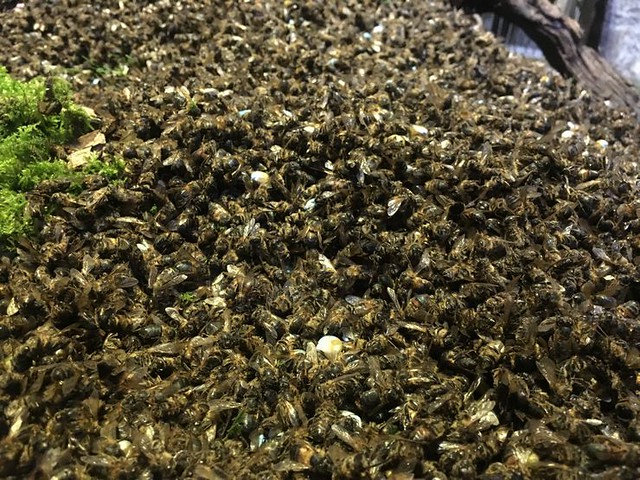
"Can you imagine what 37 million dead bees looks like"
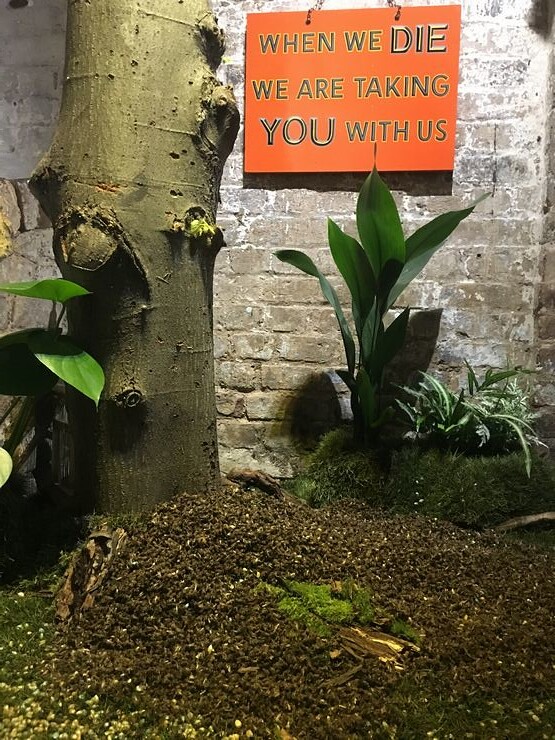
Consistent with the theme of positivity, change and salvation all visitors to the show receive a small pack of recycled cards and sachets of bee friendly seeds, each of the cards has on the face a detail of an animal painted by Louis and on the reverse, a description of the issue and a “call to action”. The call to action is incentivised by an offer of a free print to the first 23 people to join and donate to one of the environmental organisations on each of the cards.
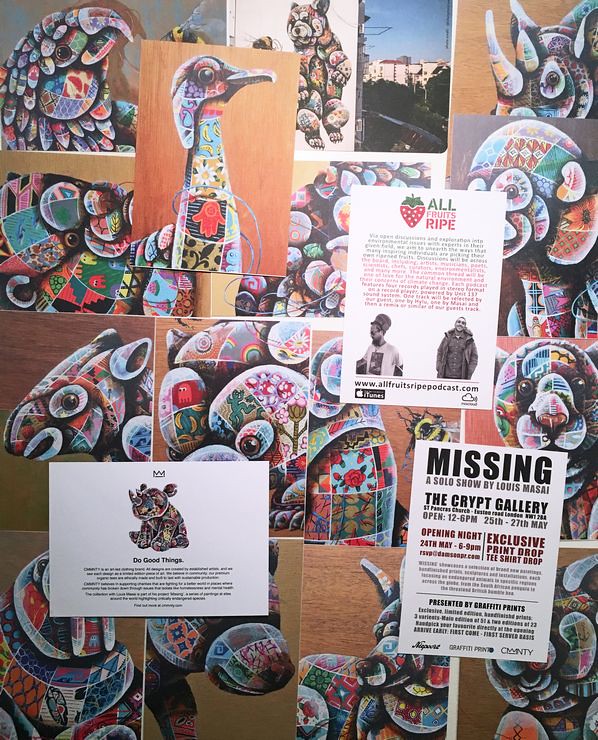
On the opening night a large proportion of the wall was taken up by a large collection of prints, all with quilted penguins, some with bees and some with cartoon character penguins, notice the bees are all hand finished variations.

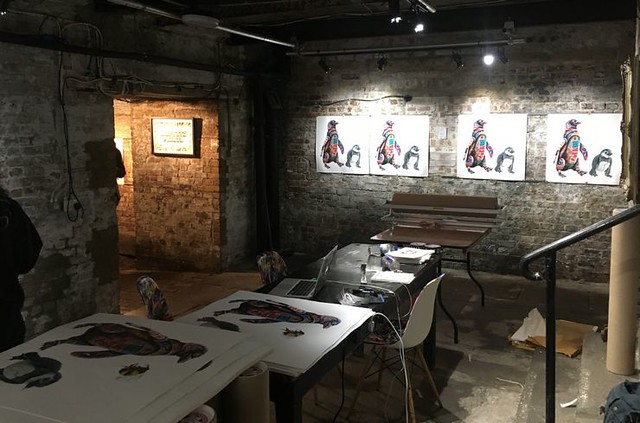
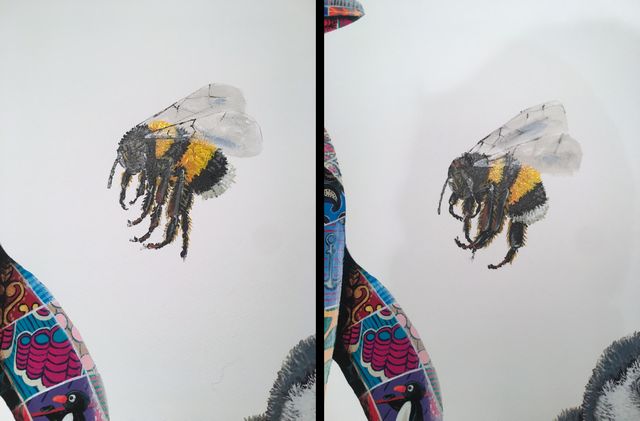
A rather curious decision was made to remove the prints from the walls by lunchtime on day 2, which stripped the vault of a noticeable proportion of the art on display. Having seen the space the night before, things looked noticeably thinner the following day. Noot Noot! as Pingu might say.
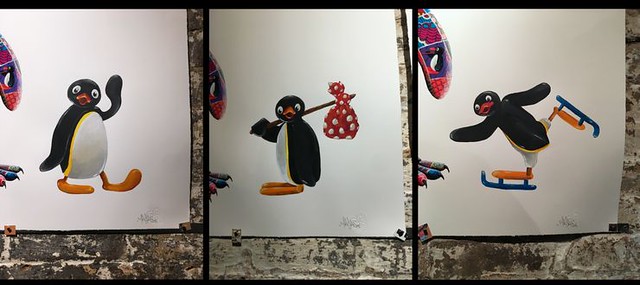
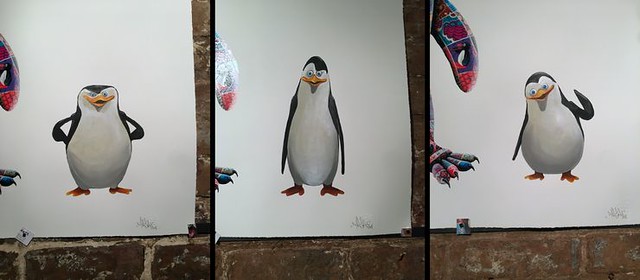
It is exciting to see an artist noted for painting walls seize the opportunity to expand into installations and sculpture and indeed some involved the sound (as well as the smell) of the hive.
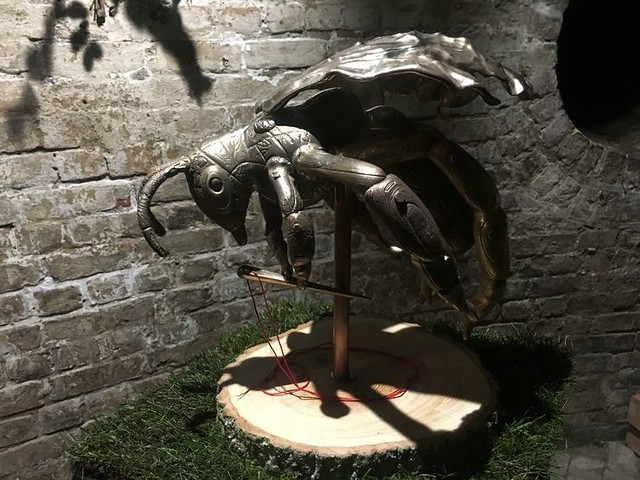
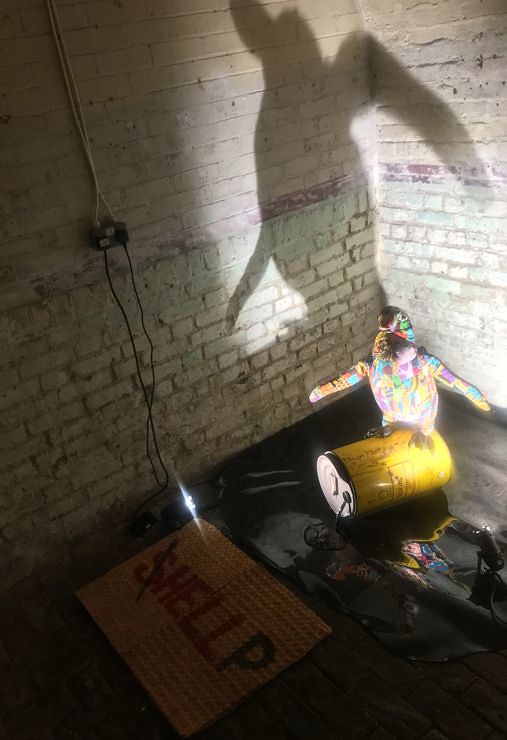
Shell hell
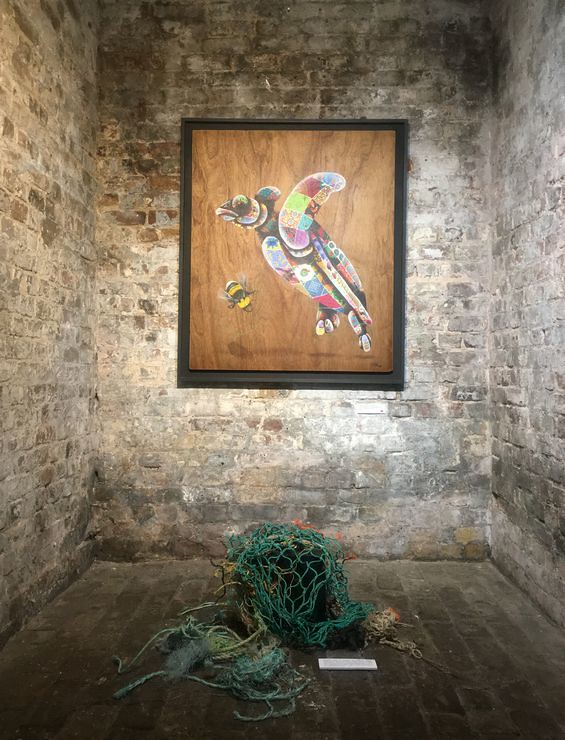
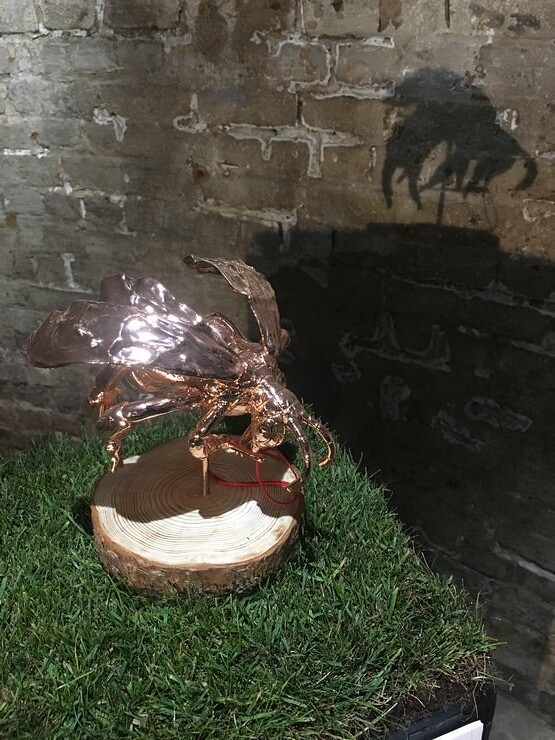
"No Strings Attached"; Honey Bee (electro plated copper)
Missing misses nothing, Louis Masai has created a solo show which pulls out all the stops: a great location, activist art, multi media, amazing production values and a fundamental that is sometimes forgotten – really good art or, as Bob Dylan put, “Behind every beautiful thing, there’s some kind of pain”.
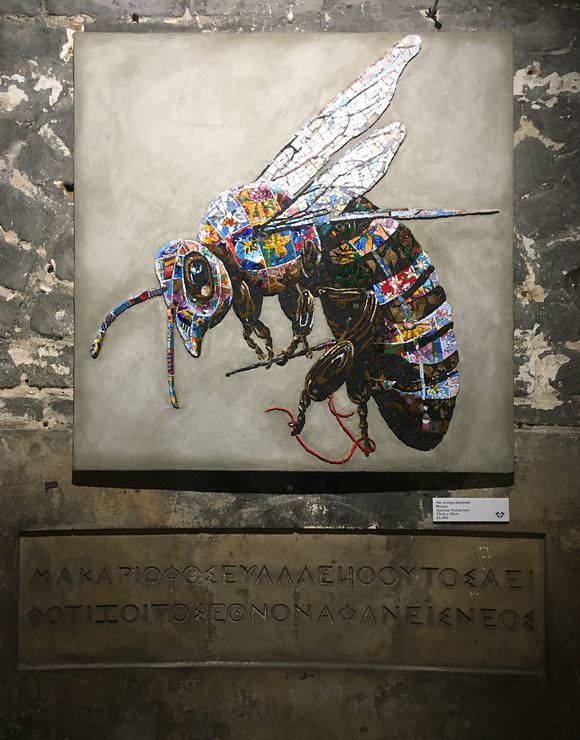
"No Strings Attached"; Species Honey Bee, mosaic
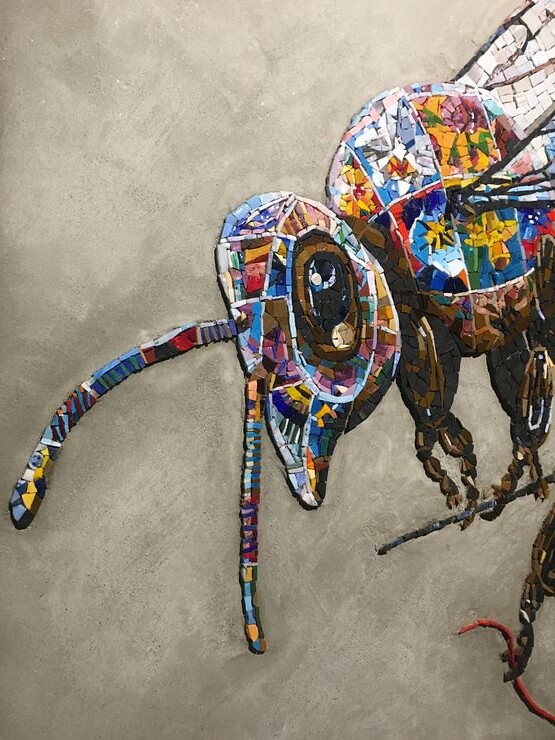
"No Strings Attached"; Species Honey Bee, mosaic (detail)
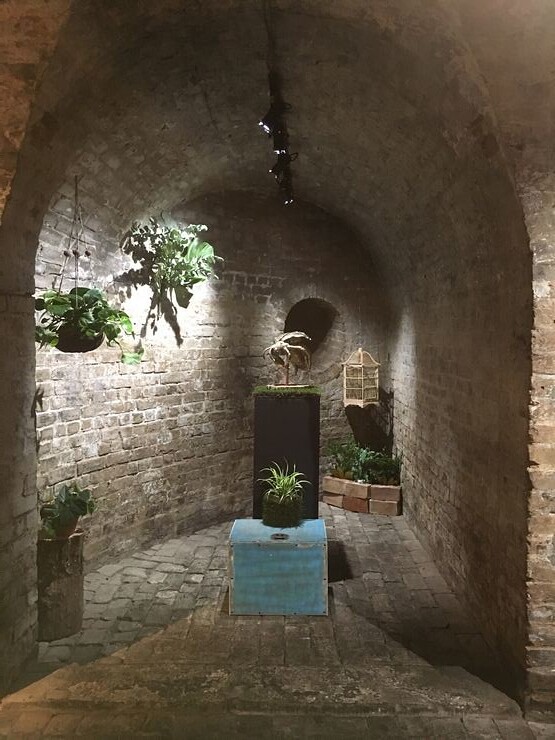
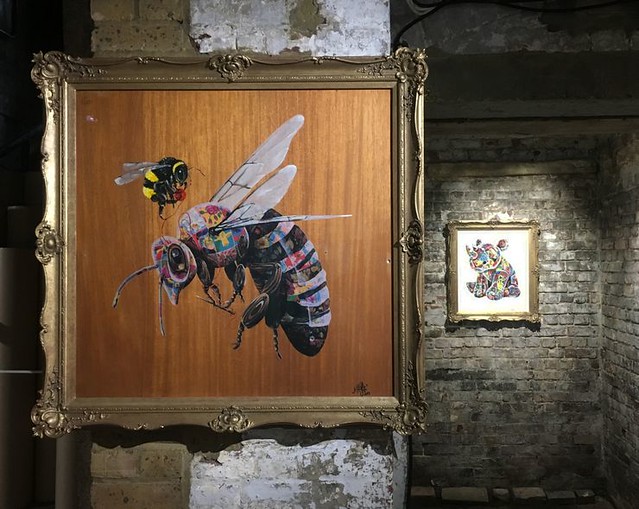
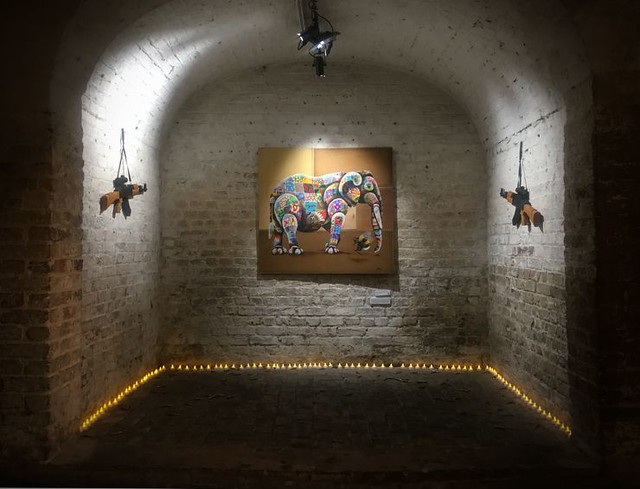
"100 A Day Keeps The Poachers Away" African Elephant (100 elephants a day shot)
All photos: Dave Stuart
The Crypt Gallery
St Pancras Church
London
24th - 27th May 2018
“and God said unto them, Be fruitful, and multiply, and replenish the earth, and subdue it: and have dominion over the fish of the sea, and over the fowl of the air, and over every living thing that moveth upon the earth” Genesis 1:28 – and thus begineth the issue which vexeth the street artist Louis Masai.

#Save The bees, Masai, Shoreditch, 2014
Louis Masai's environmental campaigns have been waged on walls in London and far afield since about 2010. With stark clarity and beautiful art, Masai raises awareness of the impact mankind has had on all manner of threatened species.
 #This Is Now, 2014, 7 out of 10 sparrows disappeared from London 1994 - 2001
#This Is Now, 2014, 7 out of 10 sparrows disappeared from London 1994 - 2001Masai has now brought his poignant and thought provoking work indoors for a solo exhibition “Missing”.

Exhibitions by street artists need to strike a balance between the excitement and everyman appeal of the art on the streets and the commercial and intellectual imperatives of an art world machine that operates on money. For novelty, Masai has found a great location for an exhibition, the crypt under St Pancras Church. Brick lined tunnels, dust and cobwebs, graveyard detritus and curious vaulted spaces provide an intriguing backdrop quite different to the typical contemporary white cube art space, this is certainly not your typical retail art box.

In various subterranean cross passages, “Missing” posters for endangered species have been pinned to tree trunks in mimicry of neighbourhood “anyone seen my goldfish?” poster appeals, hence the “Missing” of the show title.

Missing

Missing: Walrus
The first and probably most impressive sequence of work to greet the visitor are a series of acrylic and bitumen paintings on reclaimed wood in which endangered animals are rendered in a colourful patchwork which is being repaired by a bee bearing a needle and thread. The bee as an agent of repair is a motif that recurs in many guises in this exhibition.


"Last Two Hundred And Fifty"; Species Arabian Leopard
A clue to understanding Masai’s perspective comes perhaps from a moment in a film produced by Masai on his travels in which a commentator laments the failure of the orthodox red flag waving approach to environmental awareness: “everything is going to die; we are all doomed; stop stop STOP!!” The solution is to replace this with messages of positivity, to motivate people into action in the belief that their actions can have an effect. It IS possible to have a positive effect through change, it is not too late, the harm can be repaired if we heed the necessary lessons. Hence the bees, whose plight – death due to pesticides - has now for years been used as the benchmark for the forthcoming environmental apocalypse are now seen as potentially the agents of repair and restoration.

"Ossie Fossils"; Species: Tasmanian Devil
Masai's use of colourful patchwork paintings of endangered species springs from the idea that once the creatures are gone all that will be left will be the toys.

Pangolin


Pangolin (detail)
In a series of small catacomb spaces Masai has combined sculpture, wood and dead matter to create quite stunning tableau of environmental harm and endangered species crisis. One of Louis’ oft repeated messages from his Save The Bees campaign, “when we DIE we are taking You with us” looms over an absolute charnel house of real dead bees, about 24,000 apparently. By day 2 these were emitting a quite detectable odour. Oh the hum-anity.

When We DIE We Are Taking YOU With Us

"Can you imagine what 37 million dead bees looks like"

Consistent with the theme of positivity, change and salvation all visitors to the show receive a small pack of recycled cards and sachets of bee friendly seeds, each of the cards has on the face a detail of an animal painted by Louis and on the reverse, a description of the issue and a “call to action”. The call to action is incentivised by an offer of a free print to the first 23 people to join and donate to one of the environmental organisations on each of the cards.

On the opening night a large proportion of the wall was taken up by a large collection of prints, all with quilted penguins, some with bees and some with cartoon character penguins, notice the bees are all hand finished variations.



A rather curious decision was made to remove the prints from the walls by lunchtime on day 2, which stripped the vault of a noticeable proportion of the art on display. Having seen the space the night before, things looked noticeably thinner the following day. Noot Noot! as Pingu might say.


It is exciting to see an artist noted for painting walls seize the opportunity to expand into installations and sculpture and indeed some involved the sound (as well as the smell) of the hive.


Shell hell


"No Strings Attached"; Honey Bee (electro plated copper)
Missing misses nothing, Louis Masai has created a solo show which pulls out all the stops: a great location, activist art, multi media, amazing production values and a fundamental that is sometimes forgotten – really good art or, as Bob Dylan put, “Behind every beautiful thing, there’s some kind of pain”.

"No Strings Attached"; Species Honey Bee, mosaic

"No Strings Attached"; Species Honey Bee, mosaic (detail)



"100 A Day Keeps The Poachers Away" African Elephant (100 elephants a day shot)
All photos: Dave Stuart

1 comment:
great pleasure reading your post.Its full of information I looking for and I love to post a comment that "The content of your post is awesome" Great work.
Assignment Writing Services in uk
Academic Writing Services in uk
Post a Comment